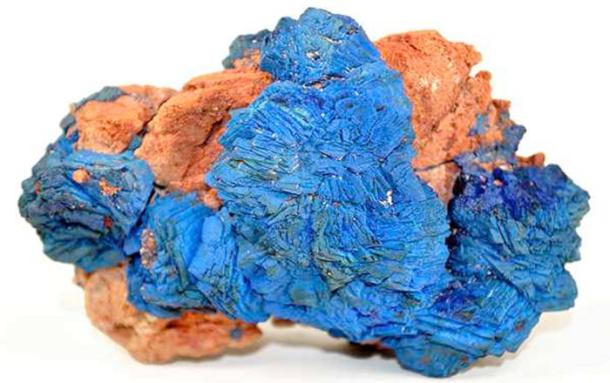Science
Researchers Uncover Europe’s Oldest Blue Pigment, Transforming Art History

A recent archaeological discovery in Germany has significantly altered our understanding of Paleolithic art. Researchers have identified the earliest evidence of blue mineral pigment use in Europe, dating back approximately 13,000 years. This groundbreaking find at the site of Mühlheim-Dietesheim suggests that our prehistoric ancestors had access to a more advanced color palette than previously believed.
The discovery revolves around a small stone artifact, initially thought to be an oil lamp when excavated from this Final Paleolithic era site. Upon conducting advanced scientific analyses, researchers detected traces of a vivid blue residue containing azurite, a copper carbonate mineral known for producing a brilliant blue hue when processed. This revelation marks the first documented use of blue mineral pigments during Europe’s Paleolithic period, as reported by National Geographic.
Significance of the Discovery
The presence of azurite not only pushes back the timeline for the use of blue pigments but also indicates that early humans had a sophisticated understanding of materials and color. This challenges the long-held belief that such advanced artistic practices emerged only later in human history. Researchers believe that the ability to create and utilize vibrant colors in art may point to deeper cognitive and cultural developments among early humans.
The study, published in the journal Antiquity, highlights the importance of revisiting archaeological findings with modern scientific techniques. These methods can reveal new insights into the lives and capabilities of our ancestors, transforming how we interpret prehistoric art.
Further Implications
The implications of this discovery extend beyond just the realm of art history. Understanding the technological advancements of early humans can shed light on their social structures and interactions. The use of blue pigments may have held symbolic significance, possibly linked to rituals or status within communities.
As researchers continue to study the site and its artifacts, they hope to uncover more about the social and cultural dynamics of the time. The ability to create and use colors like blue could suggest a level of creativity and expression previously underestimated in our understanding of prehistoric societies.
This discovery not only enriches the narrative of human artistic development but also encourages a reevaluation of how we view prehistoric life. With continued exploration and analysis, the story of our ancestors continues to evolve, revealing layers of complexity that highlight their ingenuity and adaptability.
-

 Top Stories3 months ago
Top Stories3 months agoTributes Surge for 9-Year-Old Leon Briody After Cancer Battle
-

 Entertainment4 months ago
Entertainment4 months agoAimee Osbourne Joins Family for Emotional Tribute to Ozzy
-

 Politics4 months ago
Politics4 months agoDanny Healy-Rae Considers Complaint After Altercation with Garda
-

 Top Stories4 months ago
Top Stories4 months agoIreland Enjoys Summer Heat as Hurricane Erin Approaches Atlantic
-

 World5 months ago
World5 months agoHawaii Commemorates 80 Years Since Hiroshima Bombing with Ceremony
-

 Top Stories3 months ago
Top Stories3 months agoNewcastle West Woman Patricia Foley Found Safe After Urgent Search
-

 Top Stories5 months ago
Top Stories5 months agoFianna Fáil TDs Urgently Consider Maire Geoghegan-Quinn for Presidency
-

 World5 months ago
World5 months agoCouple Convicted of Murdering Two-Year-Old Grandson in Wales
-

 World5 months ago
World5 months agoGaza Aid Distribution Tragedy: 20 Killed Amid Ongoing Violence
-

 World5 months ago
World5 months agoAristocrat Constance Marten and Partner Convicted of Infant Murder
-

 Top Stories4 months ago
Top Stories4 months agoClimbing Errigal: A Must-Do Summer Adventure in Donegal
-

 Top Stories4 months ago
Top Stories4 months agoHike Donegal’s Errigal Mountain NOW for Unforgettable Summer Views









